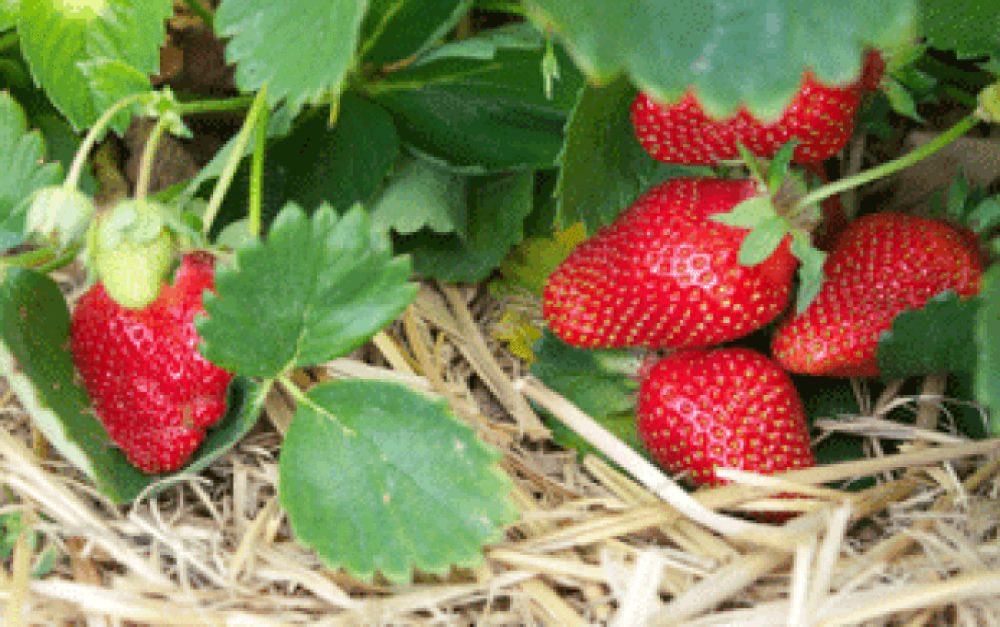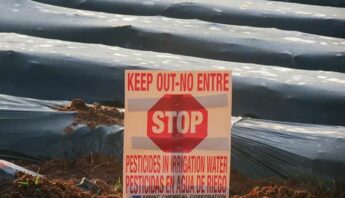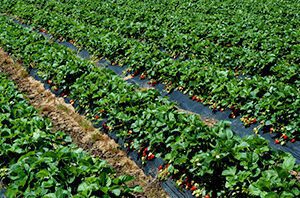Last year, thanks to incredible public outcry, cancer-causing methyl iodide was taken off the market. But other fumigant pesticides are still in wide use on strawberry fields and beyond, and they are among the most toxic and difficult-to-control agricultural chemicals.
Recognizing their hazardous nature, EPA is currently reviewing the federal rules for drift-prone fumigants — years earlier than the normal review cycle.
Responding to the agency's call for public input, PAN submitted comments earlier this week on behalf of over 30 food, farming and farmworker organizations and more than 5,000 concerned citizens. The message? Fumigants are too hazardous. It's time for better protections, and a plan to transition away from their use by 2020.
Harmful, drifting chemicals
Soil fumigants are applied as gases at rates of up to 400 pounds per acre — making this class of pesticides extremely difficult to control and contain. Even when used as directed, they drift into neighboring communities and often land where children live, learn and play.
Chloropicrin, a severe respiratory irritant, is of particular concern. In 2012, California scientists found this fumigant to be a "potent carcinogen." To date, EPA hasn't taken action to further study these findings or put better protections in place where the chemical is used.
This week, PAN spokesperson Paul Towers called on the agency to take action:
"Scientists and communities have already demonstrated the harms of fumigants both in the lab and in the field. And PAN has documented chloropicrin drift around homes, gardens and schools in California communities. EPA should move quickly to implement protection or buffer zones and ensure safety levels are adopted that put the health of children first.”
In addition to calling attention to important health impact evidence — like the carcinogenicity of chloropicrin — that have been overlooked, PAN's comments submitted to EPA on Monday highlight the agency's outdated fumigant risk assessment. The agency’s "levels of concern" for on-the-job and residential exposure are decidedly low, according to the findings of a recent EPA expert review panel. And buffer zones around fields are inadequate.
Key evidence ignored
EPA isn't the only agency overlooking evidence of fumigant health harms. In its review of chloropicrin kicked off earlier this year, California is also sidestepping its scientists' findings that the chemical is linked to cancer. Dr. Susan Kegley, consulting scientists for PAN, said:
"All of the scientists from the University of California and California Environmental Protection Agency who reviewed the studies on chloropicrin came to the conclusion that this fumigant is carcinogenic. Yet the Department of Pesticide Regulation decisionmakers altered that conclusion on the basis of a statistical argument to allow more exposure to the chemical.
"The fact remains that the studies show that chloropicrin is highly irritating and a potent carcinogen. DPR should be acting to prevent harm to California communities, not to allow more of it."
Kegley, along with other scientists and health professionals, delivered a detailed letter to California's Department of Pesticide Regulation (DPR) earlier this year, urging the agency to implement better protections for California communities and invest in a state-based plan to transition away from fumigant reliance.
A few weeks ago, California legislators joined the call, urging DPR to take a closer look at the chloropicrin cancer studies and implement better protective measures for both chronic and acute health impacts. Their letter to the agency highlighted the urgency of the problem:
"We are putting the public health of our constituents at risk."
Chloropicrin is also an extreme respiratory irritant, causing damage on contact. There have been over 1,400 reported illnesses related to chloropicrin drift since 1999. The actual number is likely much higher since many incidents go unreported.
Fumigants make up 20% of agricultural pesticide use in California, with especially heavy use in strawberry fields. Across the country, they are applied to many other crops including citrus in Florida and potato fields in the Midwest. Until better protections are put in place and viable alternatives are implemented, the people working in those fields and orchards — or living nearby — will continue to be exposed to harmful fumigant drift.







